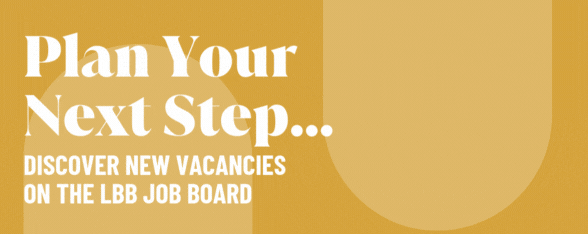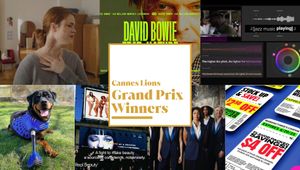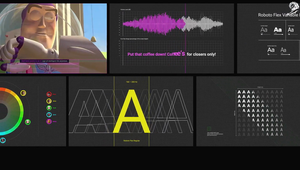
Magic Numbers: Saving and Enabling Creativity with Eric Chun

With over 20 years of experience in growth strategy, marketing analytics, and data strategy, Eric Chun’s passion is in helping clients activate their data to unlock creative ideas that propel business growth.
In his current role, Eric oversees FCB Chicago’s strategic analytics practice of 35+ professionals specialising in audience intelligence, market research, measurement, and database marketing across the agency’s portfolio of over 50 brands. He is an industry expert in understanding how data and consumer insights can be infused throughout the entirety of the marketing process from brief development to production to optimisation.
LBB> Data-driven creativity is something that brands and agencies all over the world are investing in and banking on - but what does that really mean, what are the best practices and potential blindspots?
Eric> The way I articulate data-driven creativity to my clients and my team is the following: creative output that has a better chance of performing in-market because it’s rooted in data. A hunch is a naked hypothesis. When there’s numerical evidence to inform, contextualise, and back those hunches – they drive greater economic value than naked hypotheses alone.
This seems easy and straight forward to execute.
The blind spot that organisations need to overcome is that data practitioners and business decision makers operate very differently. The most critical element of truly enabling ‘data-driven creativity’ is by first acknowledging the language gulf between the two groups, and to then establish processes that allow them to effectively communicate with each other and play to their strengths.
Data practitioners operate in a world of precision, order, and this yearning for the “perfect, right answer”. (This is often why academic research takes years!) Conversely, business decision makers crave speed and a sharp POV.
These ways of working are at odds.
And when these differences aren’t recognised, tension and conflict arises. Business decision makers can help by establishing a clear definition for ‘what success looks like’, mapping out clear timelines, and enabling a process for divergent thinking to manifest where ideas are workshopped together vs. the dreaded data hand-off.
Data practitioners can help by interrogating the assignment thoroughly as to avoid ‘boiling the ocean’, providing directional intelligence vs. seeking perfect answers, and focusing on narrative storytelling vs. crafting data outputs too in the weeds for an audience to follow. Each group must bend and suppress to enable a stronger partnership to thrive.
LBB> What’s the number one question that clients are coming to you with when it comes to how they can better use data to enhance the creativity of their content and experiences?
Eric> The number one question I am receiving is, “Why can’t we make this work?” Clients want to know why their process isn’t working and where it is going wrong. A lot of this I’ve touched on previously in terms of the blindspots and communication gaps that naturally occur to sink this process if not pro-actively managed.
LBB> How can you make sure that data is elevating creative rather than forming a windtunnel effect and knocking all the interesting or unique edges off that make something distinctive?
Eric> To me, a lot of this comes down to incentives and expectations. Humans operate based on their incentivises, and typically don’t deviate. Organisations have to truly ask themselves, “Are we incentivising these interdependent teams and setting expectations that we are all working towards the same shared goal of creativity?” When the answer is no and when data/insights teams are not accountable for the end-product and work itself, the process breaks.
There have been many instances we’ve observed where client data and insights teams were incentivised to play it safe. This leads to behaviours like going with the majority and seeking out the average vs. finding outliers, not seeking the contrarian view, and avoiding taking risks.
We especially see this with creative testing. Too often creative testing is about conforming to norms and averages because incentives are misaligned rather than nurturing the best ideas and enabling the best creative to live.
LBB> Can you share with us any examples of projects you’ve worked on where the data really helped boost the creative output in a really exciting way?
Eric> The data project I am most proud of in terms of brand impact was when FCB Chicago first pitched Michelob Ultra and took over as its lead creative agency about a decade ago.
At this time, Michelob Ultra was a ‘diet beer’ that catered towards an older male audience. The brand wasn’t perceived as cool, had little cultural relevance, and was declining in household penetration and total sales. FCB Chicago won this pitch with data insights at the core of our creative narrative.
Leveraging Facebook’s now defunct affinity analysis tool, we analysed what else consumers who liked Michelob Ultra’s Facebook page were into. While these page likes weren’t rising to the very top, there was something incredibly interesting and novel about the fact that people who liked Michelob Ultra’s page were also into things like Tough Mudder, Colour Runs, and Spartan Race.
This analysis along with other research we did led to our insight around the Social Athlete – today's young professional consumer who wanted to stay fit, but also drink and have fun with friends. And while in 2024 this may not feel as breakthrough of an idea, in 2014 positioning a light beer brand as a premium Sports Brand was a dramatic strategic and creative leap.
To see our original insight reflected in multiple years of campaign and Superbowl work was such a thrill. And best yet, our strategy worked!
Our creative partnership with Michelob Ultra helped spearhead the brands turnaround from an after-thought to the #2 domestic beer sales the late 2010s supplanting Corona, Miller Lite, and Coors Lite.
Professionally, this was a major learning experience and pivotal moment for me in my career. It taught me that success as a data professional in a creative agency is more about being interesting than having perfect, precise answers.
It taught me the value of looking beyond the obvious, connecting data to the cultural context, and hunting for insights beyond a narrow category lens – in this instance to understand who our consumer is when they are not a beer drinker. Ultimately this project helped shape my current analytics POV for how data and creativity operate together best.
LBB> More brands are working to create their own first party data practice - how can a brand figure out whether that’s something that is relevant or important for their business?
Eric> While I am huge proponent that every organisation needs a first party data strategy, this train of thought can be taken too far. An ROI is not guaranteed. The data platforms that sell the infrastructure to enable robust first party data practices today are power players.
And to senior executives, their sales representatives give extraordinarily compelling sales presentations. But building out this elaborate data infrastructure and capability is not for everyone.
And often the long-term requirements of both the investment and talent necessary for upkeep, utilisation, and on-going maintenance are an afterthought. Furthermore, there also needs to be a clear, no-brainer starting point for usage that makes the initial and on-going investment worth it even if a company doesn’t develop a use case beyond this original intent.
To use a metaphor, we have seen first-hand organisations get sold Ferraris that they then leave parked in the garage.
Organisations should avoid getting too enamoured by a dream state sales pitch or getting swept over by the competitive pressures of keeping up.
Rather the focus should be on conducting the necessary due diligence to truly diagnose real organisational data needs, to determine what pain points new technologies will alleviate, and to forecast the likelihood an organisation has the internal talent and processes to realise the benefits of these sizeable investments as part of a broader data technology roadmap. It’s important to think holistically – what are the true fixed, variable, and opportunity costs for these types of projects.
LBB> We talk about data driving creativity, but what are your thoughts about approaching the use of data in a creative way?
Eric> One of the core philosophies we live by as a strategic analytics team is that we are limited only by our imagination as data practitioners. As we enter decade three of the “Big Data” era, this has never rung more true. Working in the data space is a creative exercise, and the best flex their imagination in limitless ways. Curiosity and creativity are equally as important attributes for success as data fluency – regardless of industry.
For us at FCB Chicago, one of the most visible ways our data creativity shows up is through the “datasets” we use to bring our consumer to life and solve problems.
Some of our best, most interesting work has been executed leveraging uncommon, non-traditional data sources like Match.com or OKCupid Profiles, Yelp, TripAdvisor reviews, Reddit, Amazon data, song lyrics, etc.
From these sources we get insights, statistics, and perspectives that you otherwise just couldn’t obtain. Our philosophy is that data is everywhere. And this world of data is a playground to be explored.
LBB> In your view, what’s the biggest misconception people have around the use of data in marketing?
Eric> The biggest misconception people have around the use of data in marketing is that it’s about killing creativity vs. enabling creativity. And hopefully all the arguments I’ve made thus far explain why I am so passionate about fixing the system that makes killing creativity the default setting for organisations.
LBB> In terms of live issues in the field, what are the debates or developments that we should be paying attention to right now?
Eric> With Big Data, AI, and more connected data systems, the issue that can’t get lost is the value and needs of data people. Many organisations are heavily focused on and making large investments in data infrastructure.
And rightfully so.
But the on-going importance of data. People should not be underestimated nor ignored. As stated, working with data requires equal amounts fluency and creativity and imagination. Data on its own is just that. It’s numbers. It’s charts. It’s information without context.
While AI and machines are getting smarter and more agile, we do not live in a world yet where machines can connect ideas and get to the bigger data story. We may get there one day. But for now, organisations need to continue to foster healthy communities for data people – the craftsman and practitioners to thrive. It’s the human touch that gives data soul.















